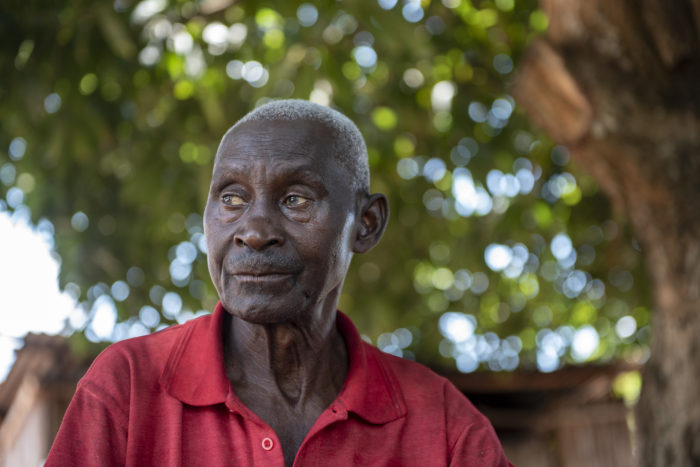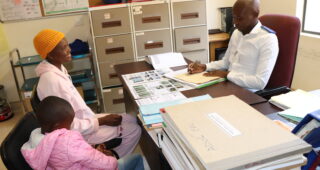Ending TB in Mozambique
Si mão Muangane, 58, lives with his 16-year-old daughter in Macia, Mozambique (Bilene District, Gaza). He has been on treatment for multi-drug-resistant tuberculosis (MDR TB) since September 2018, with support and monitoring from the Elizabeth Glaser Pediatric AIDS Foundation (EGPAF).
mão Muangane, 58, lives with his 16-year-old daughter in Macia, Mozambique (Bilene District, Gaza). He has been on treatment for multi-drug-resistant tuberculosis (MDR TB) since September 2018, with support and monitoring from the Elizabeth Glaser Pediatric AIDS Foundation (EGPAF).
According to his medical history, Muangane was once “lost to follow up,” having dropped out of his first attempt at TB treatment two years ago. When asked about the reasons for this interruption in care, he expressed that the first days of treatment adherence can be difficult—even with assistance.
“One must have courage to comply. I had the support of the nurses; they even gave me their personal contact details, so I could call if I needed help. Still, when I stopped coughing, I stopped taking medications and going to the hospital.”
Soon, things took a turn for the worst: “I fell ill shortly thereafter: fevers and flu, plus a severe cough. So I returned to the health clinic, where I took some medical exams and had a counseling session with the psychologist before restarting treatment. Since then, I have stopped coughing. I also got my appetite back and, this time, I am going to continue till the end.”
Approximately one quarter of the world’s population is infected with TB. Of the 10 million people with active TB in 2017, 1.6 million lost their lives. This means that 4,300 people die of TB every day.
Mozambique is one of 30 countries with the highest burden of TB in the world. But with EGPAF’s support, 8,249 people in the province of Gaza were treated for TB in 2018; 181 of them had multi-drug-resistant TB, like Mr. Muangane.
TB is the main cause of death of people living with HIV in sub-Saharan Africa. In Mozambique, where the prevalence of HIV is 13.2 percent more than half of the people infected with TB are also living with HIV.
Monitoring Coughs
As the main clinical partner for the province of Gaza, EGPAF has trained 45 cough officers to work in the 40 health facilities that implement the TB one-stop model, which ensures that TB/HIV co-infected patients are managed for both infections at the same clinic, by the same provider, at the same time. As a result, these officers are better equipped to respond to the treatment needs of HIV/TB co-infected patients.
Carlos Langa, 34, is one of the trainees. He works at the Macia Health Center, screening an average of 260 coughing people per day and giving daily “palestras” (health education talks) to an average of 1,300 people per month.
“The patients that are with us have been adherent to treatment, because the psychosocial support is very important in these cases” said Langa.
One of the cases that Langa follows up on is that of Saujina Simango, a 35-year-old woman who began TB treatment immediately after she was diagnosed. Simango has adhered to treatment for five months and has seen significant improvements in her health and quality of life.
“I came to the hospital because I was coughing a lot and experienced heavy night-sweats while sleeping. My family rallied around me and gave me the strength to get tested. I had some nausea in the beginning, and it is not easy coming to the hospital regularly. Fortunately, I am feeling better now; I stopped coughing and, now that I have almost completed treatment. I see that it was worth the struggle.”
Mr. Muangane and Mrs. Simango give the pandemic a human face. These people, and many others, are the reason EGPAF has embraced the “End TB” campaign.
Nelma Julieta Massunda Vaz
Mozambique
Tuberculosis



